Hi All,
I've just finished making my first bow and am looking for some feedback and tips to make the next one better. The bow is ash that was felled in the spring. I roughed it out at the time and then left it for a few months before working on it off and on over the next few months. I shaped it 'by eye' and consequently it's not entirely straight and the handle aint perfectly in the middle but seems to have come out ok. I reckon it draws about 20lbs or less and shoots football size groups over the 15m of my back garden. Will test her out over longer range when I get the chance.
Unbraced:

Braced:

Full draw:
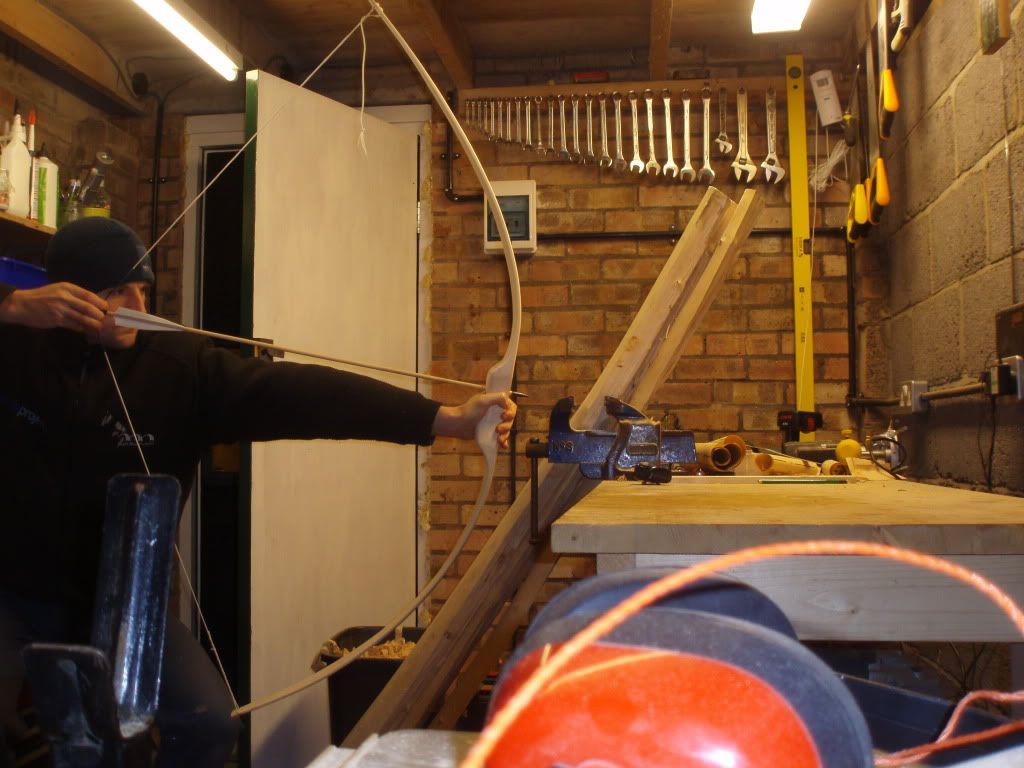
Here you can see the back of the bow, I didn't touch it other than removing the bark. Is that the cambium?
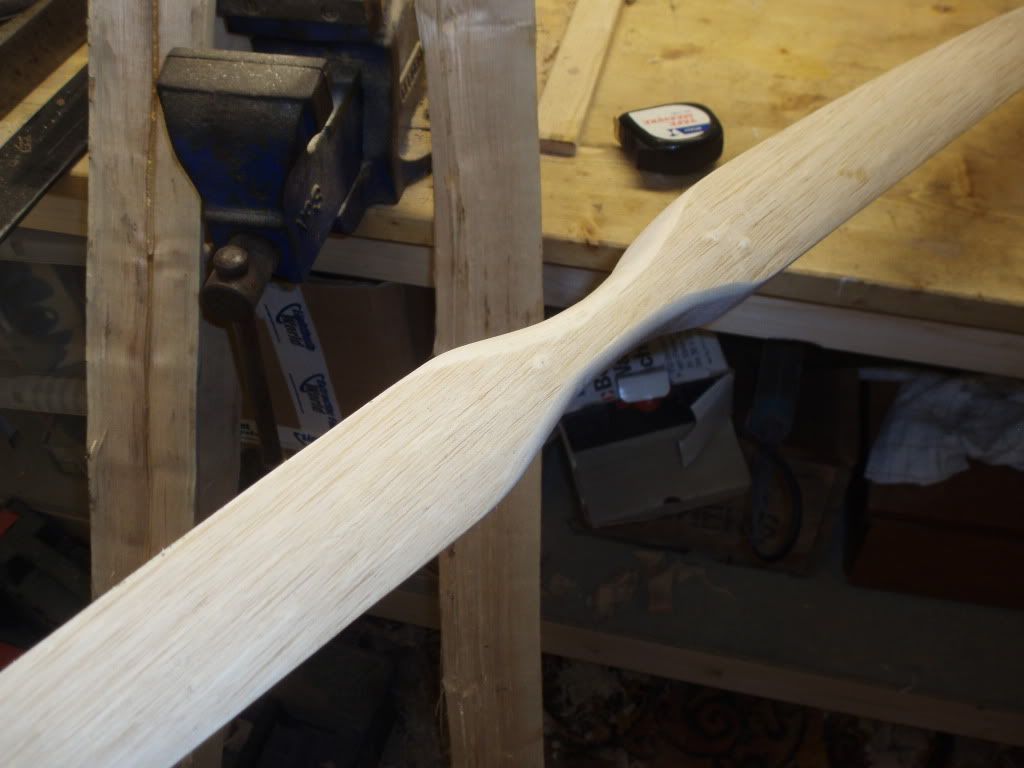
Here you can see how it's a bit wonky.
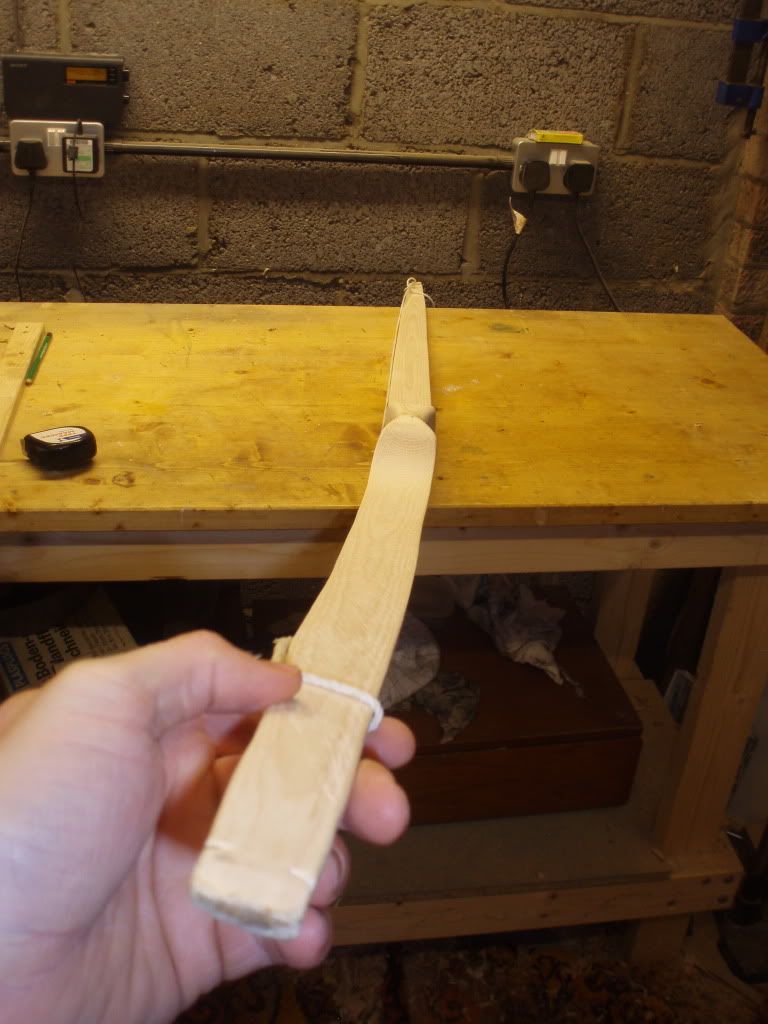
Here's another stave I've got, it's another quarter of the same section of the other one: It's twisted whilst seasoning. How best to approach it? I'd like to do a better job of the next one and get a heavier draw weight. I've seen that some people stretch a piece of string along the stave to mark a straight centre line. Will this work with a twisted stave?
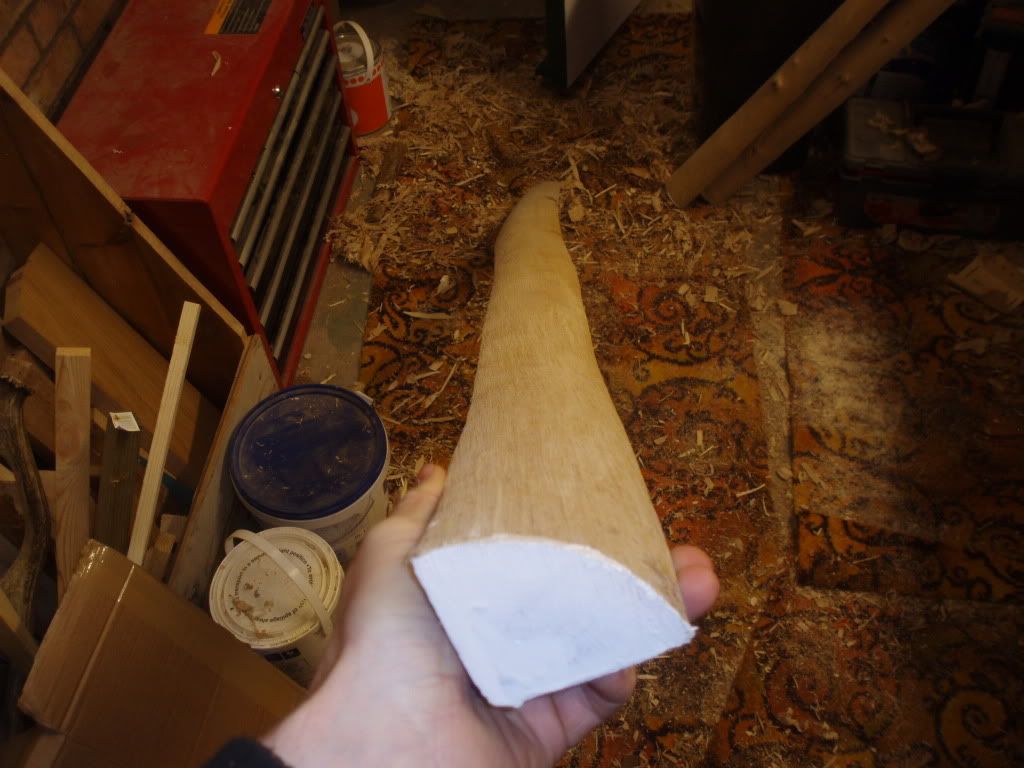
Here's another from a different ash, it's twisted a bit as well and has a few small knots but reckon I can avoid those:
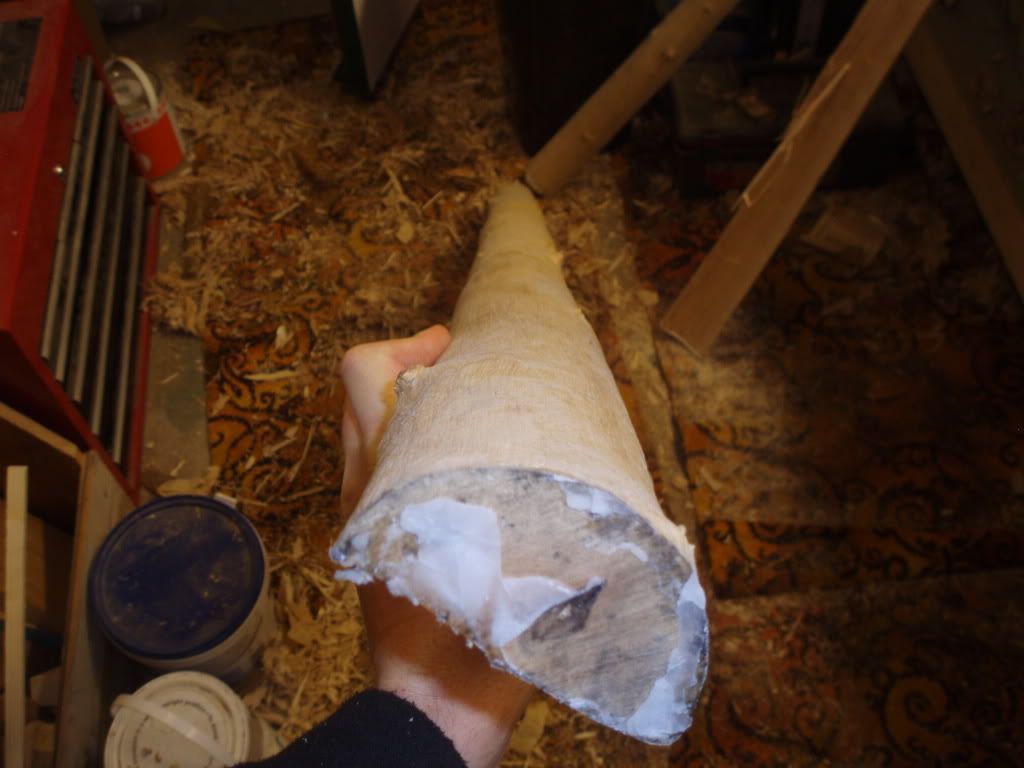
Any tips would be greatly appreciated.
Cheers
I've just finished making my first bow and am looking for some feedback and tips to make the next one better. The bow is ash that was felled in the spring. I roughed it out at the time and then left it for a few months before working on it off and on over the next few months. I shaped it 'by eye' and consequently it's not entirely straight and the handle aint perfectly in the middle but seems to have come out ok. I reckon it draws about 20lbs or less and shoots football size groups over the 15m of my back garden. Will test her out over longer range when I get the chance.
Unbraced:

Braced:

Full draw:

Here you can see the back of the bow, I didn't touch it other than removing the bark. Is that the cambium?

Here you can see how it's a bit wonky.

Here's another stave I've got, it's another quarter of the same section of the other one: It's twisted whilst seasoning. How best to approach it? I'd like to do a better job of the next one and get a heavier draw weight. I've seen that some people stretch a piece of string along the stave to mark a straight centre line. Will this work with a twisted stave?

Here's another from a different ash, it's twisted a bit as well and has a few small knots but reckon I can avoid those:

Any tips would be greatly appreciated.
Cheers



